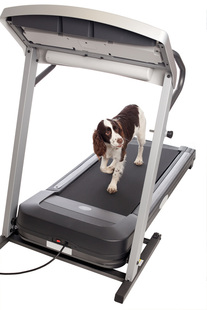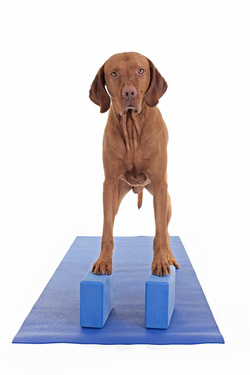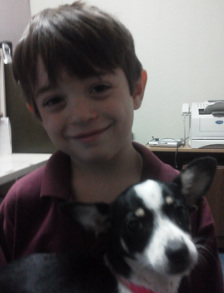Wheelchairs, or carts, are becoming more and more common for dogs. Many dogs are living happy, active lives with the aid of these wheelchairs. The internet is full of pictures and videos of dogs playing, going for walks, and frolicking at the beach in their wheelchairs. I receive frequent phone calls and emails about wheelchairs for dogs. While I'm glad that society now accepts and understands that many dogs can be very happy and enjoy a good quality of life with a wheelchair, I want to remind people that these dogs need to be in a physical rehabilitation program too. The reasons are numerous as to why, but here are the top 5 reasons your dog in a wheelchair needs physical therapy.
1. Your dog might walk again. If there is any chance your dog could regain use of his legs and become mobile without a wheelchair, you owe it to your dog to try. A solid rehab program will provide the kind of therapy that just might get your dog out of that chair!
2. Your dog has other orthopedic or neurologic problems . If your dog is paralyzed in the back end and has bad joints or weakness in the front end or some such other issue, you are in for some trouble ahead. Rehab can help manage the other problems so your dog can stay mobile, with what he has, for as long as possible.
3. Your dog is overweight. An overweight dog in a cart is like a time bomb waiting to go off. It's not a matter of if there is going to be a problem, but when there is a problem. A rehab vet will help your dog lose the body fat without sacrificing much needed muscle.
4. Your dog doesn't have a "back-up". A dog with four legs can handle having an issue with one leg and still be mobile. A dog in a cart doesn't have as many options. If your dog in a cart experiences a problem with one of its "good" legs it can completely immobilize your dog. Prevention and early detection are crucial in these dogs.
5. Your dog is compensating. This is the biggest and best reason of all. All dogs in carts are using their bodies in ways other than what they are designed for. For instance, the front legs, neck, and shoulders are all compensating in a dog that is in a rear wheel cart. The upper back is under strain. There is less flexibility. Different muscles are activated during movement and while standing. Rehab will address these compensations and help prevent them from becoming disabling problems.
1. Your dog might walk again. If there is any chance your dog could regain use of his legs and become mobile without a wheelchair, you owe it to your dog to try. A solid rehab program will provide the kind of therapy that just might get your dog out of that chair!
2. Your dog has other orthopedic or neurologic problems . If your dog is paralyzed in the back end and has bad joints or weakness in the front end or some such other issue, you are in for some trouble ahead. Rehab can help manage the other problems so your dog can stay mobile, with what he has, for as long as possible.
3. Your dog is overweight. An overweight dog in a cart is like a time bomb waiting to go off. It's not a matter of if there is going to be a problem, but when there is a problem. A rehab vet will help your dog lose the body fat without sacrificing much needed muscle.
4. Your dog doesn't have a "back-up". A dog with four legs can handle having an issue with one leg and still be mobile. A dog in a cart doesn't have as many options. If your dog in a cart experiences a problem with one of its "good" legs it can completely immobilize your dog. Prevention and early detection are crucial in these dogs.
5. Your dog is compensating. This is the biggest and best reason of all. All dogs in carts are using their bodies in ways other than what they are designed for. For instance, the front legs, neck, and shoulders are all compensating in a dog that is in a rear wheel cart. The upper back is under strain. There is less flexibility. Different muscles are activated during movement and while standing. Rehab will address these compensations and help prevent them from becoming disabling problems.




 RSS Feed
RSS Feed